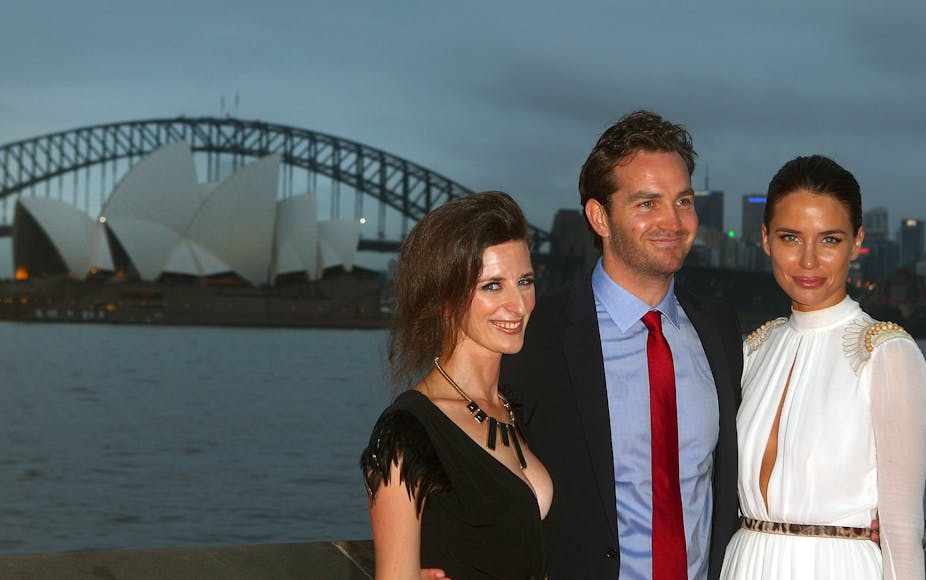What makes an Australian film truly Australian? Do there need to be Aussie characters? Aussie actors? Aussie subject matter? Australian humour?
Australians are good at obsessing about what makes them different and unique, particularly so in their local films. But this obsession with “Australian-ness” could be holding back our own film industry, critically and commercially.
Australian-ness
The business of determining what is or isn’t an Australian film is far from being academic. It is largely political and when aptly judged by filmmakers and well-realised technically on the screen, quite profitable. But being simple made with Australian cast, crew and story doesn’t guarantee success with today’s audience.
Take the example of the very successful film, Red Dog. It worked both critically and commercially because it was competently realised and engaged a shared mythology of Australia. It also displays the five ingredients that make for popular television: vicarious experience; self-assessment; a contained narrative some happiness; and some sadness.
Critics, however, have already been less than impressed than audiences with A Few Best Men. The comedy is about a British groom, played by Australian Xavier Samuel, who comes to Australia with his three best men to marry the girl of his holiday romance.
It may yet be a commercial success but it is unlikely to be seen as culturally worthy or, at least, won’t accord with what some Australians feel an Australian film should be.
The recent release of Any Questions for Ben? a film made by Working Dog, the production company behind such Australian classics as The Castle and The Dish, will continue this debate about what makes an Australian film. Box office figures suggest it is not getting a big tick of approval from audiences.

Duelling industries
More than 20 years ago, film scholars Elizabeth Jacka and Susan Dermody, writing in The Screening of Australia: Anatomy of a National Cinema, identified a duality in the Australian film production industry: they called them “Industry 1” and “Industry 2”.
The first was characterised by exclusively commercial imperatives and was either neutral or right of the political spectrum, and the second was culturally engaged and politically left.
Dermody and Jacka saw that duality as restricting the industry. Their analysis of the films produced between 1970 and 1986, the first 25 years of the renaissance of the film production industry, gave weight to their argument that the contradictory demands of commercial success and cultural worthiness have “limited the types of films that can be made in Australia”.
It has been especially so if government money, state or commonwealth, is involved. This is because cultural relevance is the prime rational for private access to the public purse.
A film called Felicity
These contradictions were well-illustrated by South Australian Film Corporation’s investment in the proposed sequel to erotic film, Felicity (John Lamond 1978).
The sequel, Felicity in the Garden of Pleasures, was budgeted at A$230,000 (modest for the time) and the corporation decided to invest A$100,000, on par with other investors. Lamond had sweetened the deal by throwing in an additional 7.5% share in producer’s profit.
The corporation, facing a financial crisis in 1979, was keen for income, and the director, John Morris, told the board “the film would be funny, commercial and R-rated”. Given the first Felicity’s box office performance, the sequel was surely a winner.
It was not to be, not with the corporation’s money at least. Despite the its public position that it “would make any type of film as long as it was well done”, and the reported position of Minister Hugh Hudson that “he preferred sex films to violent films”, the investment was withdrawn a month later.
Unsurprisingly, there are limits to what the public (and the Adelaide Advertiser) considers a proper use of public funds, particularly when it comes to making films.
Commercial or cultural?
At the end of the 1980s, the golden age of the modern Australian film industry, Dermody and Jacka lamented that “the industry has a sense that it must compromise between the dutifully "bland” and cultural and the dutifully commercial. This compromise tends to overwhelm the moments of genuine richness that should be fully explored and acknowledged.“
Are we still there today?
The official idea of the Australian film has broadened since then. But is today’s industry constrained by Australian content and control requirements? Is a continuing need for Australian-ness holding back the film industry because the Australian film exists only within an aesthetic and economic framework set by Hollywood?
Or is the problem elsewhere?
Critics and audiences in Australia may have too narrow an idea of what constitutes an Australian film and are then unforgiving of Australian films that do not meet their cultural expectations.
This will have to change. Otherwise expectations of commercial success and cultural worthiness in each and every Australian film will continue to limit the types of films that may be made in Australia.

